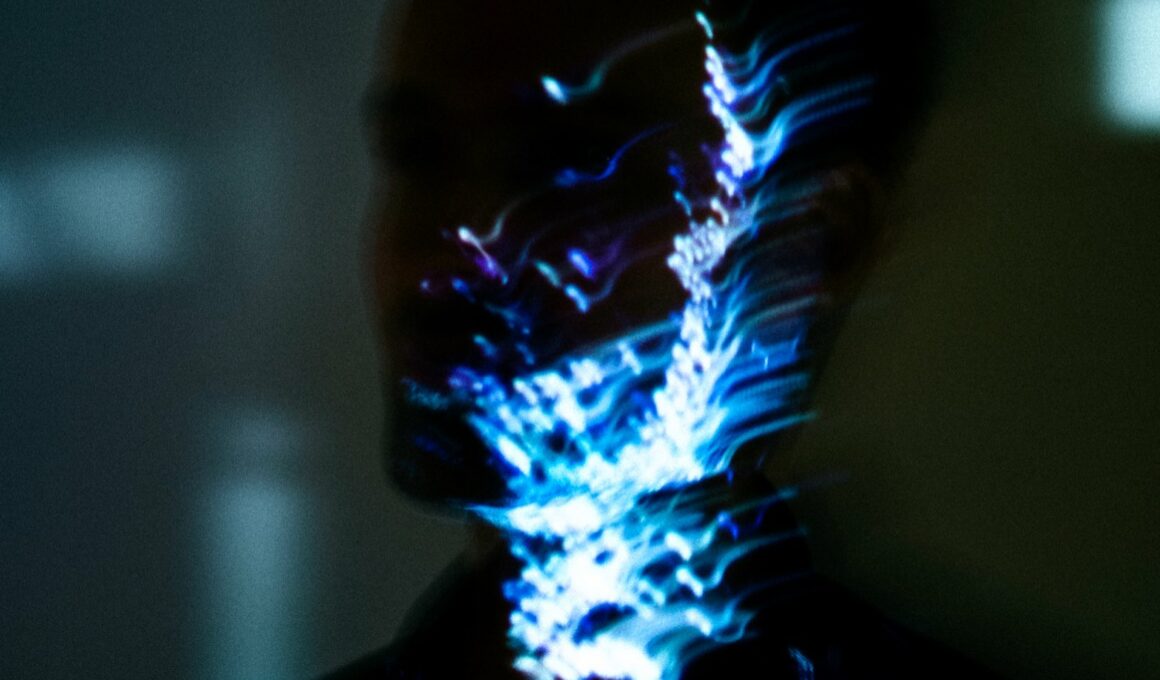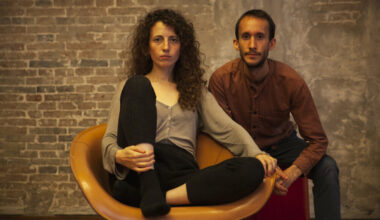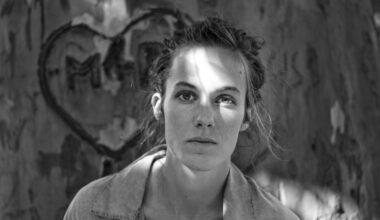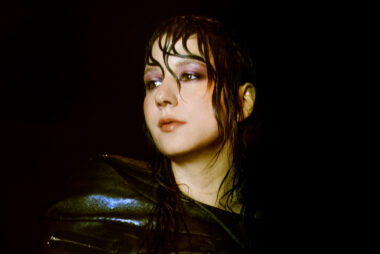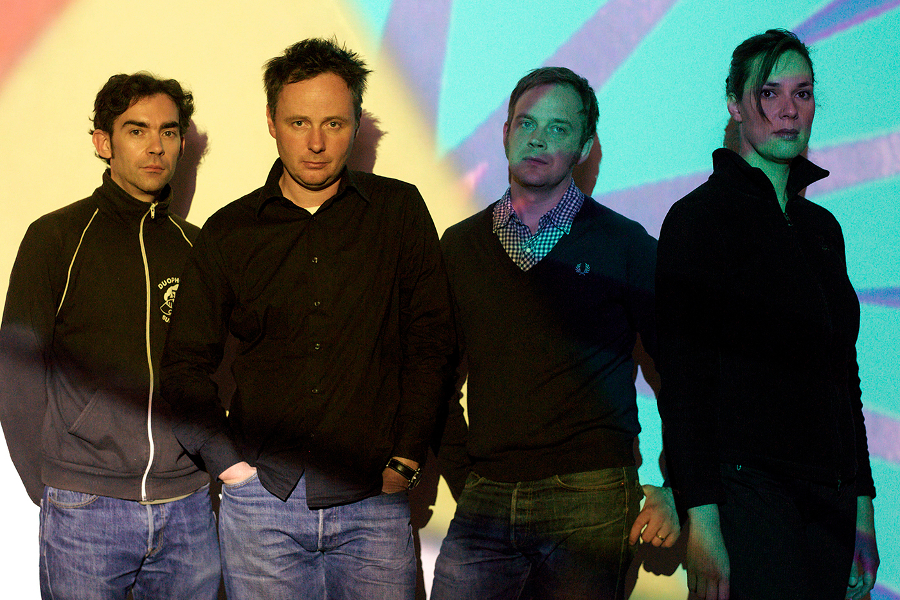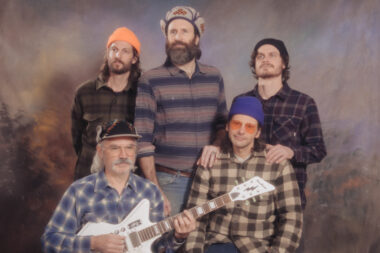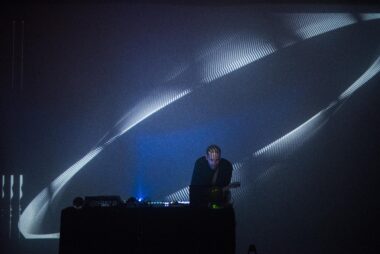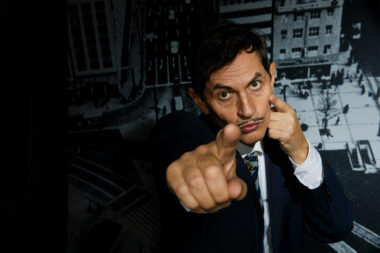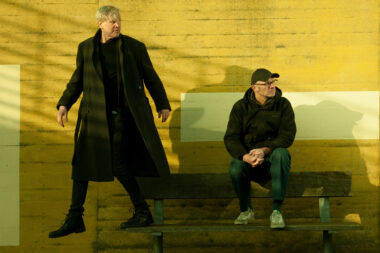Foam and Sand is latest work from Robot Koch, an award winning music producer and composer from Berlin currently residing in Los Angeles. Sweetly cinematic ambient soundscapes roam and scan through 27 ‘circles’ —each one unique, full of color and eloquently evolving.
BBC’s Bobby Friction said of Koch’s music,”it sounds like artificial intelligence discovering religion.” We found Foam and Sand to be a touching and heartfelt albeit digital excursion through the nature of time and routine, ventured through rolling arps, waving synths and subtle stabs.
Koch shared his thoughts on music, inspiration and meditation and with us.
QUESTIONS
1. What is the biggest inspiration for your music?
Nature is my biggest inspiration.
2. How and when did you get into making music?
I got into heavy guitar music as a teenager, started as a drummer in a metal band. Then I moved on to more experimental noise/jazz influenced stuff and eventually found my way to producing and composing music. It was a musical evolution guided by inspiration. what inspired me what a unique expression of emotions through sound. My music has become more ethereal and spacious over the years, it’s a gradual refinement over the years.
3. How did the lockdown inspire the sounds on Foam and Sand?
Unable to tour, like all artists during that time, I spent more time in the studio. I started creating these self soothing ambient tracks that started around tape loop recordings of my piano or synths. I found it relaxing to listen to and I made more and more of these hazy meditative tracks. The whole project is also inspired by my daily habit of meditation.
Once I had a few of these tracks finished I wanted to share it so I just set up an Instagram page for it where I shared 30 seconds of the music with visuals I created for it. Without anyone knowing who was behind this, the page started growing organically and people started to get in touch. So I released a few singles and one EP under the radar in 2020 (on Quiet Love Records and Modular Field) until Foam and Sand was officially announced as a new project by Robot Koch in 2021.
4. What’s the connection between your meditation practice and making music?
I started meditating about 7 years ago, shortly after I moved to LA. I tried different types of meditation and yoga along my path and they all point in the same direction: overcoming the illusion of separation and experiencing union with all that exists.
I’m also a certified yoga teacher but I just do private free sessions for friends as I’m busy with the music. But my music is infused with these teachings and is created with the intention to provide healing and inspiration to others.
It’s interesting that meditation and medicine have the same root syllable. It sure works like medicine for me. I used to be much more caught up in my thoughts and felt less centered sometimes. Meditating before working on my music resets my brain and helps me access ideas that are layers deeper than my conscious mind.
5. Can you tell us about your tape recording process?
What drew me into working with tape loops was the idea to magnify the irregularities and imperfections of cassette recordings, the hiss, the unsteadiness of the tone and the over-saturation of the signal. I have an old 80s Sony Walkman that I ran through a guitar pedal (Fairfield Shallow Water) which randomly modulates a short time delay to create unexpected shifts in pitch that added to the unstable sound of the tape. The result is this hazy vibrato/chorus-type that adds to the vintage tape flavour I was going for. The music which I recorded to tape was mostly acoustic (piano) but also electronic (synths like Lyra-8 or Juno, as well as some modular stuff).
6. What do you associate with Los Angeles?
A big shift in my life, new beginnings, serendipitous encounters and many dear friends.
7. What’s your favourite place in Los Angeles?
Even though I spent probably too much time in there I will say its still my home studio, with a view to the garden. Its a really zen place and I love creating in there or just sit in front of it in the sun with a coffee and a view to downtown LA.
8. How did your music change after moving to Los Angeles?
I think music always reflects the inner state of the artist as well as the external surrounding, so I think music became more personal and introspective, but also more open and connected in many ways. The nature in California really inspired my, the vast open landscapes in the desert or the lush redwood forests along the coast. I embraced collaboration with other artists but also created a lot of music on my own. I think the music is more free now, I just allow it to flow and be what it is, without overthinking it.
9. Who would you most like to collaborate with?
I love writing music to picture, so my dream collaboration would be with a film director like Denis Villeneuve (‘Blade Runner’, ‘Arrival’) or James Cameron (Aliens). I love Sci Fi.
10. Has working in film change of perception of music?
It has extended it. Working for film means you serve a vision bigger than your own, you’re part of a team, youre helping to bring something to life. This is something I really enjoy. Being true to my own sound while still making a scene work as part of a team.
10.11. Can you tell us about your visual art making process (i.e., your IG videos)?
I started making animations of close-up texture photographs, bringing them to life in a fluid art kind of style. Most of these animations I create myself but I work with other visual artists too. For example, the Berlin-based duo @magnificent.matter, who create stunning videos dedicated to the art of microscopy.
Microscopy is not just a tool that allows us to see the world in more detail, it`s also a gateway to unknown realities. Through the lens of the microscope, we are thrown into a vast space of a usually unseen world which always fascinates me. The similarities between Micro and Macro Space are one of the topics that keep recurring in my work.
Photo © Neil Kryszak
